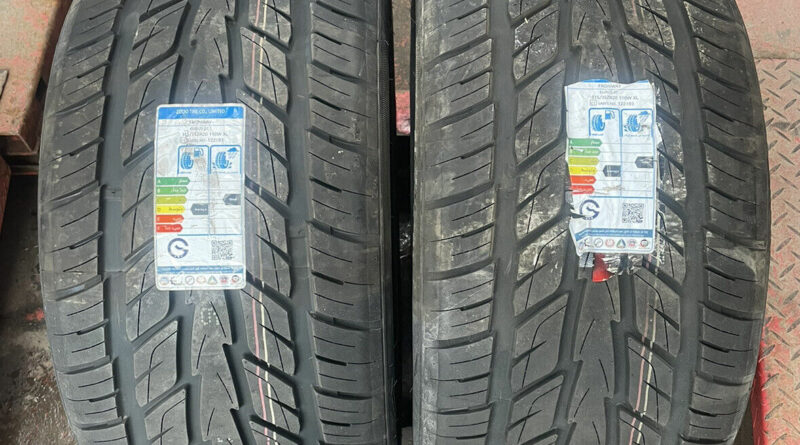A Guide to different Types of Tyres and Tread
In this guide, we’ll delve into the different types of tyres and tread patterns, helping you make informed decisions when choosing the right tyres for your vehicle. Tyres are a critical component of any vehicle, providing the necessary traction, handling, and safety on the road. However, the world of tyres can be complex, with various types and tread patterns designed for specific purposes and conditions. How to check tread.
1. Types of Tyres:
- Summer Tyres: Designed for warm weather conditions, summer tyres feature a tread compound optimized for dry and wet traction. They offer excellent handling and performance on paved roads but may struggle in snow or icy conditions.
- Winter Tyres: Engineered for cold weather and snow-covered roads, winter tyres feature a softer rubber compound and deeper tread patterns to enhance traction and grip on icy surfaces. They provide superior braking and handling performance in winter conditions.
- All-Season Tyres: As the name suggests, all-season tyres are designed to provide adequate performance in various weather conditions, including dry, wet, and light snow. They strike a balance between summer and winter tyres, offering decent traction and handling year-round.
- Off-Road Tyres: Built for rugged terrain and off-road adventures, off-road tyres feature aggressive tread patterns with deep grooves and large lugs to provide maximum traction on loose surfaces like mud, gravel, and sand. They offer enhanced durability and puncture resistance for off-road driving.
- Performance Tyres: Engineered for high-performance vehicles, performance tyres prioritize handling, cornering stability, and responsiveness. They feature a softer rubber compound and larger contact patches for improved grip and traction at higher speeds.
- Run-Flat Tyres: Equipped with reinforced sidewalls that allow them to support the weight of the vehicle even when deflated, run-flat tyres enable drivers to continue driving for a limited distance after a puncture or loss of air pressure. They provide added safety and convenience by reducing the risk of sudden tyre failures. How to understand what’s written on tyre.
2. Tread Patterns:
- Directional Tread: Characterized by V-shaped grooves that point in one direction, directional tread patterns are designed to enhance water evacuation and reduce the risk of hydroplaning. They provide excellent traction and stability on wet roads but are not suitable for rotating tyres.
- Symmetrical Tread: Featuring uniform tread patterns across the entire tyre surface, symmetrical tread patterns offer versatility and balanced performance in various conditions. They provide smooth and quiet rides with good traction and tread life.
- Asymmetrical Tread: Combining different tread patterns on the inner and outer tread areas, asymmetrical tread patterns optimize performance in dry and wet conditions. They offer superior cornering grip, stability, and traction while maintaining low rolling resistance.
- Mud-Terrain Tread: Designed for off-road driving, mud-terrain tread patterns feature aggressive lugs and deep voids to provide maximum traction and self-cleaning capabilities in muddy and rocky terrain. They offer enhanced grip and durability for extreme off-road conditions.
Conclusion:
Choosing the right tyres for your vehicle involves considering factors such as weather conditions, driving preferences, and performance requirements. By understanding the different types of tyres and tread patterns available, you can make informed decisions that ensure optimal safety, handling, and performance on the road. Whether you’re navigating city streets, tackling off-road trails, or cruising on the highway, selecting the right tyres tailored to your needs is key to a smooth and enjoyable driving experience.
Buying a used VW. Buying used vauxhall, BMW, Jaguar, Ford, Volvo, Range rover, Bentley, Aston Martin, Porsche, Ferrari, Lamborghini, Maserati, Hyundai, Tesla, Honda, Pagani

